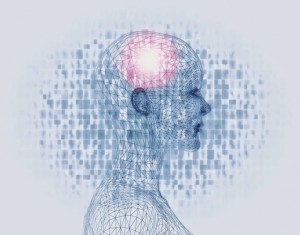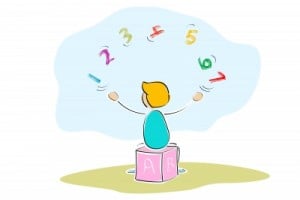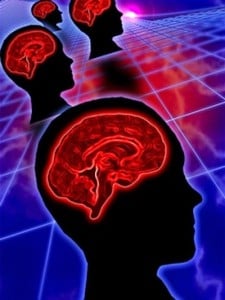Studies have shown that between 4%-5% of American adults have been diagnosed with ADD or ADHD and 11% of American children. Symptoms of ADD/ADHD include trouble focusing, restlessness, excessive and impulsive speech, difficulty with patience, and forgetfulness. The causes of ADHD come from dysfunctional brain activity, which occurs mostly in the frontal lobes and central cortex. Shown by EEGs, brainwaves of children with ADHD have much higher rates of abnormalities in the brainwaves and displayed an excess of slow waves and less of the fast waves by comparison to a child without ADHD. Neurofeedback offers children and adults with ADHD the help needed by directly retraining the brain to function more effectively and eliminate the symptoms of ADHD.
Neurofeedback has proven to be an effective and durable treatment to improve brain function without the use of medications. The process of retraining your brain is painless, noninvasive, and can treat a variety of issues including learning disabilities, behavioral issues, accident-related injuries, medical problems, psychological disorders, performance disability, and physical manifestations.
For the majority of neurotherapy patients, completion of treatment means maintaining improvements durably and indefinitely. There are some situations where a few follow up neurofeedback sessions can be highly effective. We refer to these sessions as boosters, and they can be utilized for the following cases and goals.
For many children, getting through math classes and homework assignments is a daily struggle. No matter how hard the child tries to study, math still does not come easily. Many adults deal with the same issue. Despite years of math classes and exams in the past, many adults still have difficulty doing basic math problems, which can affect day-to-day life and create feelings of embarrassment. These difficulties may be due to a learning disability called dyscalculia, a brain-based condition where a person has trouble processing numbers and math-related concepts.
Learning disabilities affect 14% of all students. Most people have heard of dyslexia, which affects a student’s ability to read and write, but learning disabilities come in many different forms. Dyscalculia is a brain-based learning disability pertaining to mathematics where someone has an inability to process and understand numbers.
Dyscalculia can be seen at all levels of mathematics and affects all ages. However, it is typically recognized in pre-school or elementary school aged-children when the child is first exposed to math concepts. Dyscalculia, just like dyslexia, affects a person’s ability to perform academically. Individuals who struggle with dyscalculia will often experience high stress and anxiety regarding math, which can negatively impact their overall mental health.
Listed below are 10 of the most reported symptoms of dyscalculia. A child or adult with dyscalculia typically has difficulty:
1. Learning numbers and recalling basic facts about numbers.
2. Counting, using fingers to count.
3. Spotting and understanding patterns.
4. Doing word problems.
5. Understanding greater than/less than.
6. Using steps involved in solving a math equation.
7. Writing numbers.
8. Understanding the order of numbers; for example, doesn’t understand that 1+8= 9 and 8+1=9.
9. Keeping score when playing games.
10. Calculating the total cost of something, such as the total cost of 3 different items at the grocery store.
Neurofeedback
Neurofeedback is a form of non-invasive treatment that uses individualized protocols to retrain the brain to work at a more optimal and efficient level. Every client that pursues neurofeedback treatment has a brain map done. During the brain map, EEG technology is used to get a reading of the brain in both active and inactive states. At one point during the brain map, the client will be asked to do a portion of math problems at their own level. This allows us to see how the brain processes and analyzes numbers. A neurofeedback professional develops a protocol based on the results of the brain map, using data from both active and inactive states, to identify what parts of the brain are underworking, overworking, or aren’t working well together. Through neurofeedback, the brain learns how to function calmly, correctly, and efficiently.
Children who are experiencing dyscalculia often see improvements in grades after completing neurofeedback sessions, as understanding math concepts becomes more accessible. The stress and anxiety of performing in a math class is reduced as well. In addition to the improvements in math, patients will experience many other positive effects of neurofeedback, including improved mood, focus, attention, memory, and more.
Schedule a free consultation to learn about how neurofeedback can benefit you or your child.
Image courtesy of photostock at FreeDigitalPhotos.net
An estimated 4.6 million school-aged children in the United States today have been diagnosed with a learning disability, making academic life so much more challenging than for an average student. The anxiety and stress that results from not keeping up with the material learned in school and performing poorly on exams can take a toll on children and their families. Parents of children who have been diagnosed with a learning disability struggle to find the right assistance for their child.









